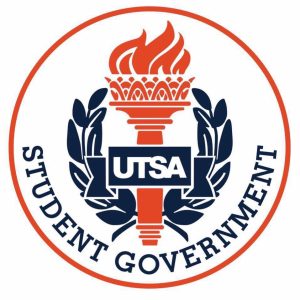The president, determined not to give up on changing political behavior in Washington, persisted in his attempts to build support in both political parties for his $800 billion-plus economic spending and tax cut plan.
The measure was passed by the House of Representatives last week, but not a single Republican supported the bill.
The Senate takes up the measure this week and Obama, publicly unfazed by the Republican cold shoulder in the House, predicted greater Republican support in the upper chamber for the unprecedented stimulus plan designed to pull the American economy out of its steepest slide in 80 years.
Since his Jan. 20 inauguration, Obama has met at the White House with congressional leaders, traveled to Capitol Hill for private sessions with House and Senate Republicans and invited a bipartisan group of lawmakers to the executive mansion for cocktails.
In tandem with the stimulus program, the Obama administration was moving to reformulate how to spend the second half of a $700 billion financial bailout plan put in place in the last months of the Bush administration to avoid the collapse of the country’s financial system.
Treasury Secretary Timothy Geithner has said the administration is considering using a government-run “bad bank” to buy up financial institutions’ bad assets. But some officials now say that option is gone because of the potential costs.
Many ideas under consideration could end up costing hundreds of billions beyond the original price tag. Aides would not rule out the possibility that the administration would seek more than the $350 billion already set aside.
The Bush administration’s spending of the first $350 billion of the bailout package drew heavy bipartisan and public criticism because it went overwhelmingly to bankers who have not put much of the money into the credit system. Obama only gained access to the second $350 billion with written assurances to Congress that the funds would reach Americans facing home mortgage foreclosures and in need of credit for autos and other big ticket items.
In his Saturday radio and Internet address, Obama said Geithner soon would announce a new strategy “for reviving our financial system that gets credit flowing to businesses and families. We’ll help lower mortgage costs and extend loans to small businesses so they can create jobs. We’ll ensure that CEOs are not draining funds that should be advancing our recovery.”
His administration “will insist on unprecedented transparency, rigorous oversight and clear accountability so taxpayers know how their money is being spent and whether it is achieving results.”
Given sizable Democratic majorities in both houses of Congress, Obama’s separate $800 billion-plus stimulus plan can still be passed without Republican backing, but Obama still was seeking opposition support for the measure as part of his campaign pledge to end Washington’s sclerotic partisanship.
Republicans pledged on Saturday to work with Obama, although leaders cautioned against treating the stimulus package like a “trillion-dollar Christmas list” and renewed their opposition to much of the bill’s spending.
“A problem that started on Wall Street is reaching deeper and deeper into Main Street. And the president is counting on members of Congress to come together in a spirit of bipartisanship to act,” Senate Minority Leader Mitch McConnell, said in the Republican’s radio address. “Unfortunately, the plan that Democrats in Congress put forward this week falls far short of the president’s vision for a bill that creates jobs and puts us on a path to long-term economic health.”
However, Obama’s stimulus plan was receiving support from most Republican governors because it would send billions to states for education, public works and health care.
Their state treasuries drained by the financial crisis, governors would welcome the money from Washington.
Vermont Gov. Jim Douglas, the Republican vice chairman of the National Governors Association, planned to be in Washington on Monday to urge the Senate to approve the plan.
“As the executive of a state experiencing budget challenges, Gov. Douglas has a different perspective on the situation than congressional Republicans,” said Douglas aide Dennise Casey.
During the final three months of 2008, the economy recorded its worst downhill slide in a quarter-century, stumbling backward at a 3.8 percent pace; that rate could accelerate to 5 percent or more this quarter.
With his Cabinet still not complete, meanwhile, Obama appeared to be leaning toward naming the fiscally conservative Republican Sen. Judd Gregg of New Hampshire to run the Commerce Department.
The top Republican in the Senate, Mitch McConnell of Kentucky, said Sunday an agreement had been reached on replacing Gregg in the Senate that would not change the current numerical makeup. He appeared to be saying that New Hampshire’s Democratic governor, who is empowered to name Gregg’s replacement in the Senate, would either name a Republican or an independent who could be expected to caucus with the party in the upper chamber of the U.S. legislature.
New Mexico Gov. Bill Richardson, a liberal Democrat, initially was nominated for the post, but stepped aside because of a grand jury investigation into the awarding of state contracts to political donors.
Obama’s Cabinet already has two Republicans: Defense Secretary Robert Gates, who was appointed by President George W. Bush and then asked by Obama to remain; and former Rep. Ray LaHood of Illinois, who did not seek re-election to the House in 2008 and soon after was named transportation secretary.









